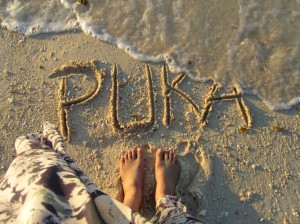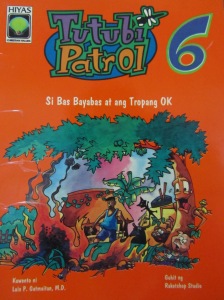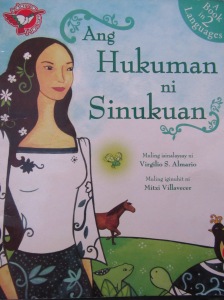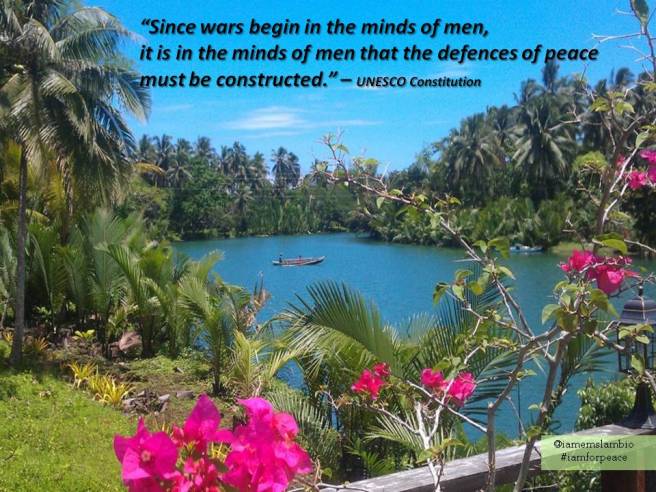Why are there intelligent individuals who are corrupt? Why are there talented people who use their gifts to exploit other people? There could be many ways and reasons to answer these questions but one simple argument and perspective is that we have the power to choose. We have the gift of free will, yet so many people use this to serve their own selfish interests at the expense of others, right? As the great Dumbledore once said, “It is our choices, Harry, that show what we truly are, far more than our abilities.”
In my earlier post, I highlighted the importance of an education that strongly supports raising children who would choose integrity, fairness, and generosity so that he or she might contribute to a just society; choose dialogue, collaboration and other peaceful means of resolving conflict so that there would be no more war; choose to protect this earth so that all may have enough.
To raise children who are conflict-sensitive, who are able to identify manifestations of violence and conflict, we have to encourage their inquisitiveness and sharpen their ability to critically think about relevant social issues such as human rights, gender equality, social and economic justice, non-violence, sustainable development, etc. To empower them as peace-promoting kids who could act for peace, we must also nurture them to learn courage and compassion and skills to resolve issues using non-violent means (i.e. dialogue, negotiation).
On this note, I launched in this blog a series called ‘Books for Raising Conflict-Sensitive and Peace Promoting (CSPP) Kids.’ My intention is to popularize the use of children’s stories to promote a culture of peace and help shape values and skills on conflict resolution and peacebuilding.
Today, on the event of the National Children’s Book Day, I am glad to revive this blog with this favorite series. This special day is also being celebrated to commemorate the date of the publication of Jose Rizal’s “The Monkey and the Turtle,” which is also my featured story. He made a publication of the story in English in the July 1889 issue of Trübner’s Oriental Record in England, which is considered to be the formal beginning of Philippine children’s literature.
Story Overview
The Monkey and the Turtle (Tagalog: Ang Matsing at Si Pagong) tells the story of two friends who had a serious fight because of a banana tree. One day they saw an uprooted banana tree and decided to cut it horizontally into two. Monkey chose the upper part while the Turtle was left with the bottom part. Both of them planted the tree but only the Turtle’s banana grew and bear fruit. Monkey volunteered to climb and get the banana fruits but his greediness got the better of him and ate them all. The plot thickens here as the Turtle got mad and decided to teach Monkey a lesson which also hurt the Monkey who then threatened to kill the Turtle. In the end, the Turtle was able to outsmart the Monkey.

The photo above is based on the original illustrations of Dr. Jose Rizal. To read the full story and see Rizal’s other illustrations, check this link:
Processing Questions for Kids
- What was the initial conflict in the story? How did this conflict escalate or worsen the situation?
- What could the Monkey and the Turtle do differently so that they both enjoyed the fruits of the banana tree and avoided hurting each other?
- Do you think the Monkey and the Turtle became friends again? Why or why not?
Peace AHA!
This story which was made popular during the Philippines colonial time is understandably highlighting how the seemingly weaker creature such as the slow Turtle could outsmart the more superior animal portrayed by the Monkey. In the modern times there are many similar circumstances where the strong and powerful exploits the weak and their resources (i.e. personal possessions, land, etc.). These create conflict (resource-based) and often times even escalate into violence. For older kids, teachers and parents may further explore this topic by citing concrete examples such as the marginalization of indigenous people in their own ancestral land or the degradation or exploitation of natural resources due to irresponsible economic activities which in turn threatens food security of people in the area.
For younger kids, teachers and parents could focus on exploring the value of collaboration and sharing. Instead of dividing the banana tree, the Monkey and the Turtle could actually have chosen to plant the tree together and divide the chore of taking care of it. Then each of them could have an equal part on the fruits of the tree or even the income should they decide to be more enterprising and grow a plantation.
Processing question number three above is an entry point to exploring the topic of reconciliation and peace with justice. Teachers and parents could deepen this discussion by asking how each of the characters felt during the story and the underlying circumstances that brought forth those feelings — when did they get hurt and get mad…what was happening when these feelings surfaced? It is important to understand the context because this points to the circumstances that drive the conflict. It is equally important to acknowledge the feelings which could make or break any relationship as these usually alter the dynamics of the relationship.[1]
If we further dig into it, feelings are also rooted in the needs of individuals. In the story, it’s not just about the loss of the banana that angered the Turtle. He has a need to be in a trusting relationship which the Monkey unfortunately chose to violate when he betrayed the Monkey’s trust. Any meaningful reconciliation must be rooted in respect and acknowledgement of what were lost and broken and an effort to mend all these. Parents and teachers could challenge the kids on what the Monkey and the Turtle could do to show their sincerity to make amends.
Reflections and Application
Role play is one fun way to learn the skills of conflict resolution and peacebuilding. In class, kids could be divided into smaller groups and instructed to prepare a role play of an alternative subplot to respond to Question number 2 as cited above. The following are some processing questions that could be used during class debriefing:
- What did the characters do differently that resulted to a more positive outcome?
- How did it affect the characters and their relationship?
- What words or phrases were used to support the actions of the characters? What meanings were conveyed by those words or phrases?
The proposed objective for the post-activity processing is to deepen the discussion on dialogue, collaboration and sharing and hopefully model these skills. The use of role play allows students to explore these ideas on their own and provide avenue for kids to learn from each other. The teacher could wrap up session by emphasizing that there are many ways to resolve conflict. Non-violent means even have the power to transform this conflict into growth opportunities such as the benefit of collaboration in the relationship of the Monkey and the Turtle.
***
I hope this gives you an idea on how you could use a simple story such as the Monkey and the Turtle to sharpen the sensitivity of young ones on manifestations of injustices which is at the root of many conflicts and to create awareness on non-violent means of resolving conflict such as dialogue and collaboration.
Let’s always choose peace 😉.
-ems #iamforpeace
Note:
[1] This discourse draws much from what John Paul Lederach calls the relational dimension of conflict. In his book, The Little Book of Conflict Transformation, he talks about what changes happen in this dimension because of conflict and what could be done to transform conflict.
Check an abridged version of the book at this site: https://www.beyondintractability.org/essay/transformation



















